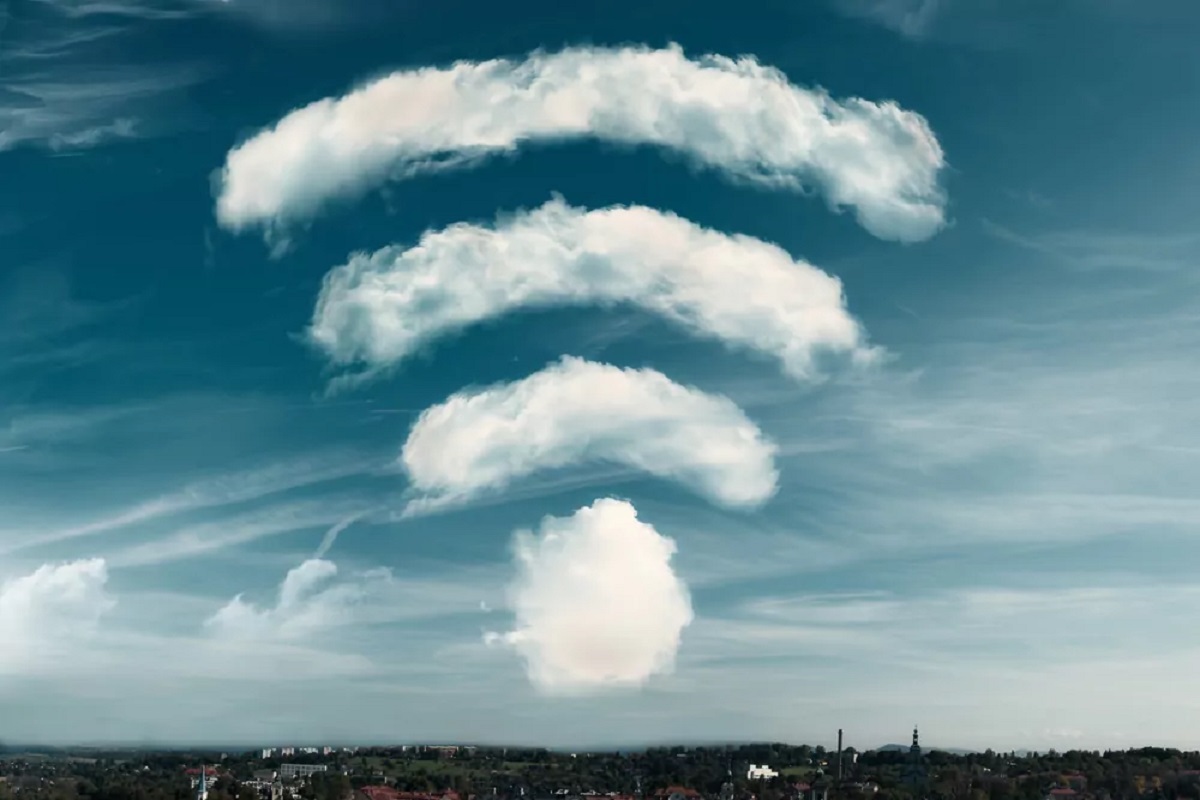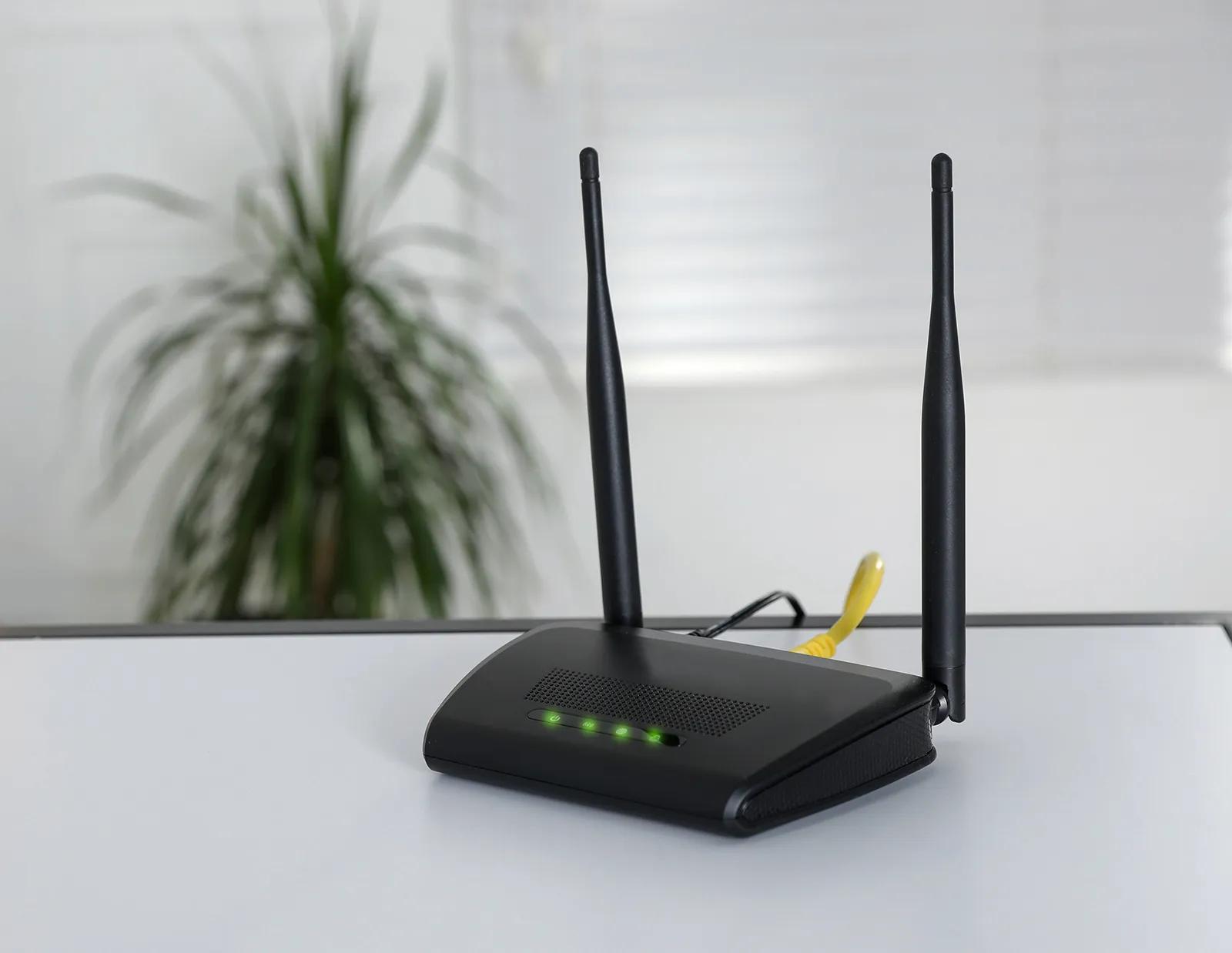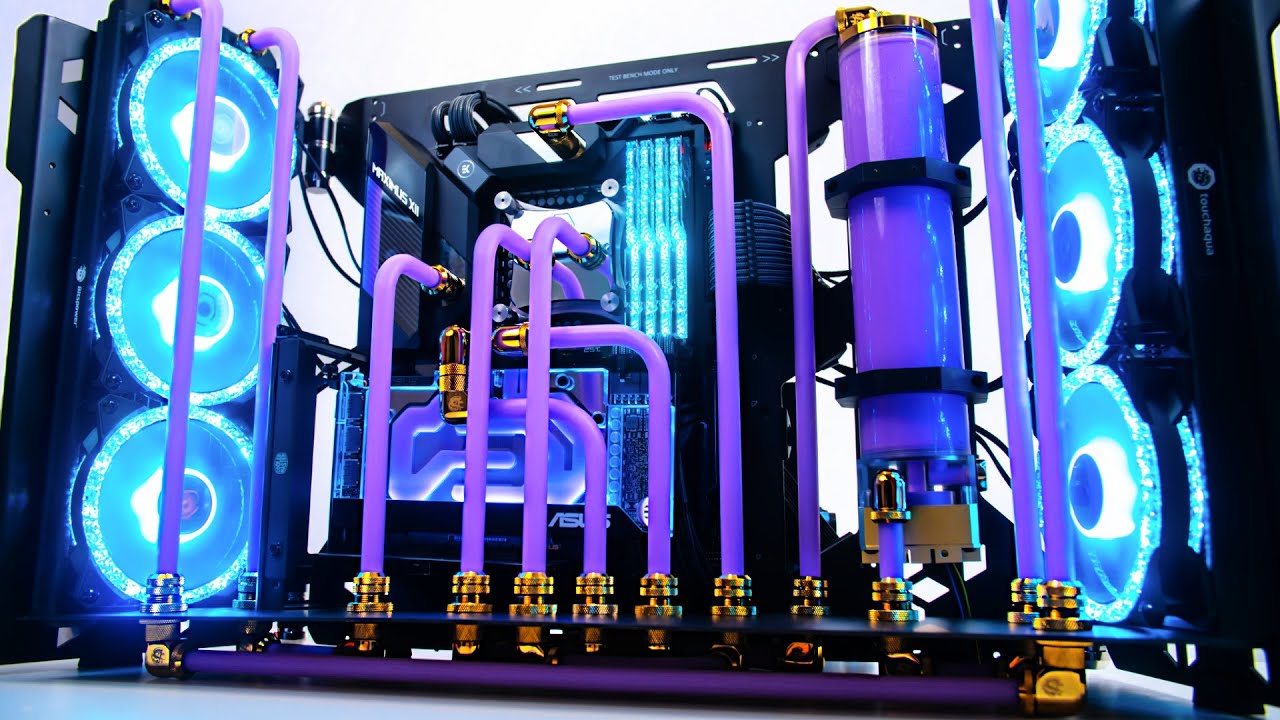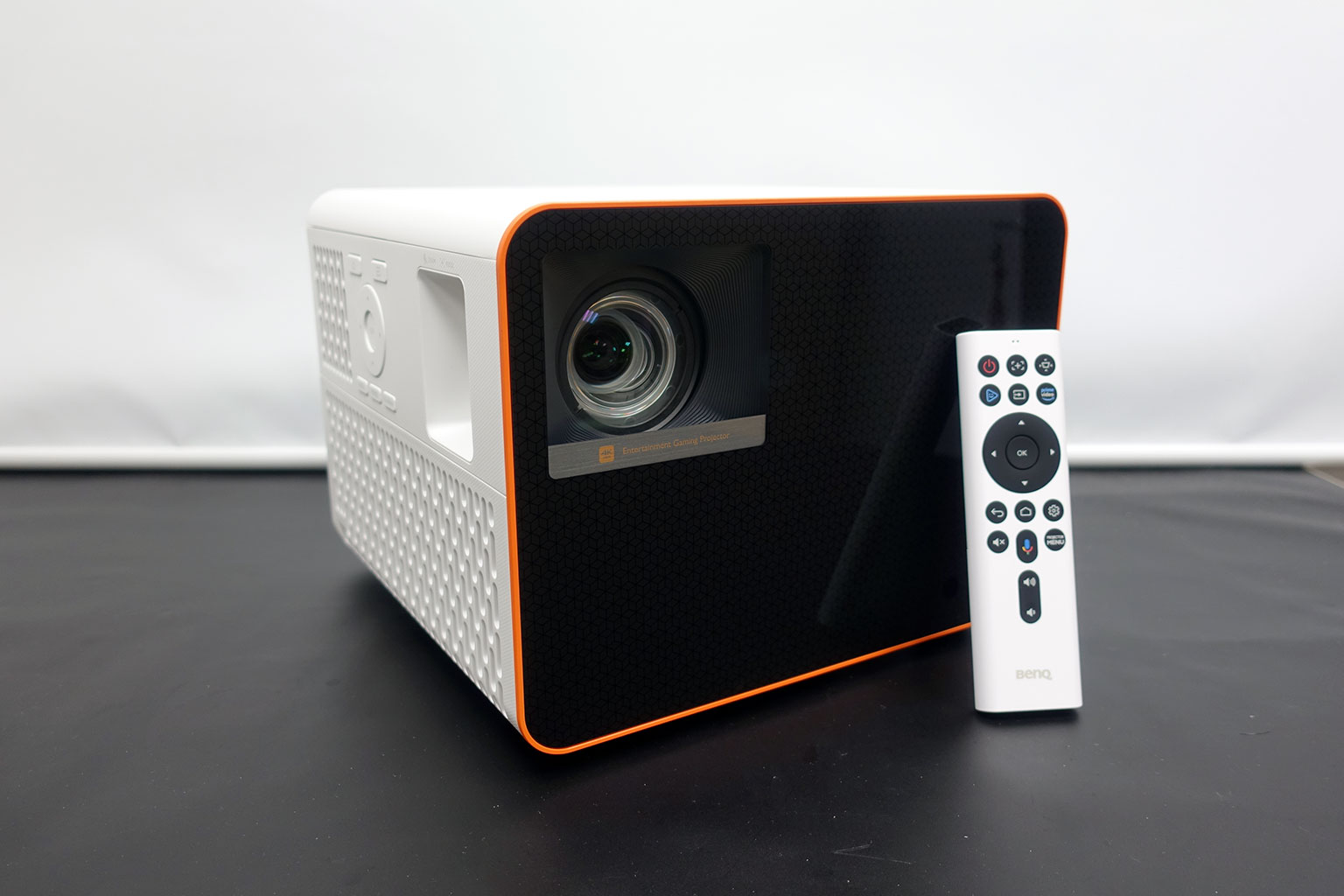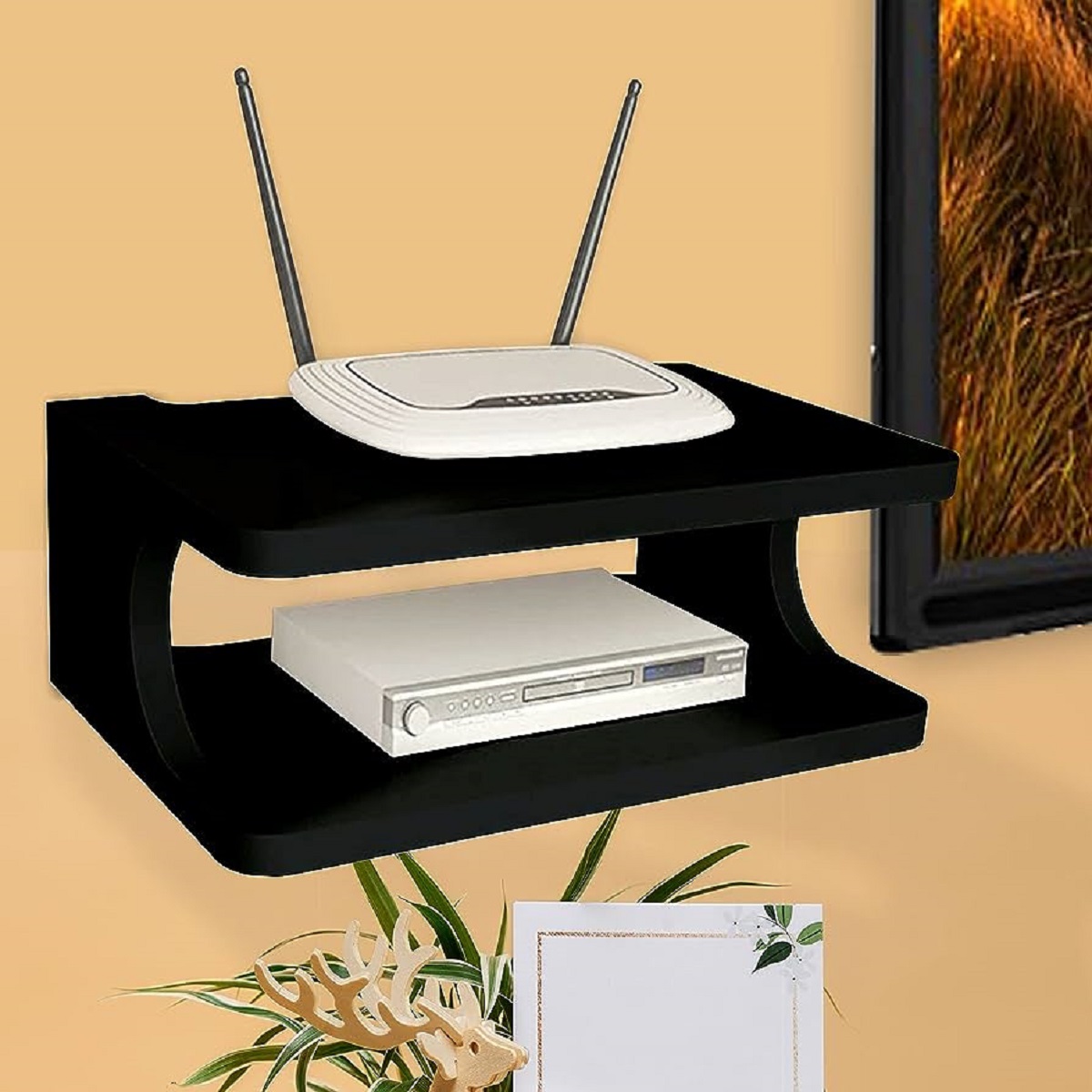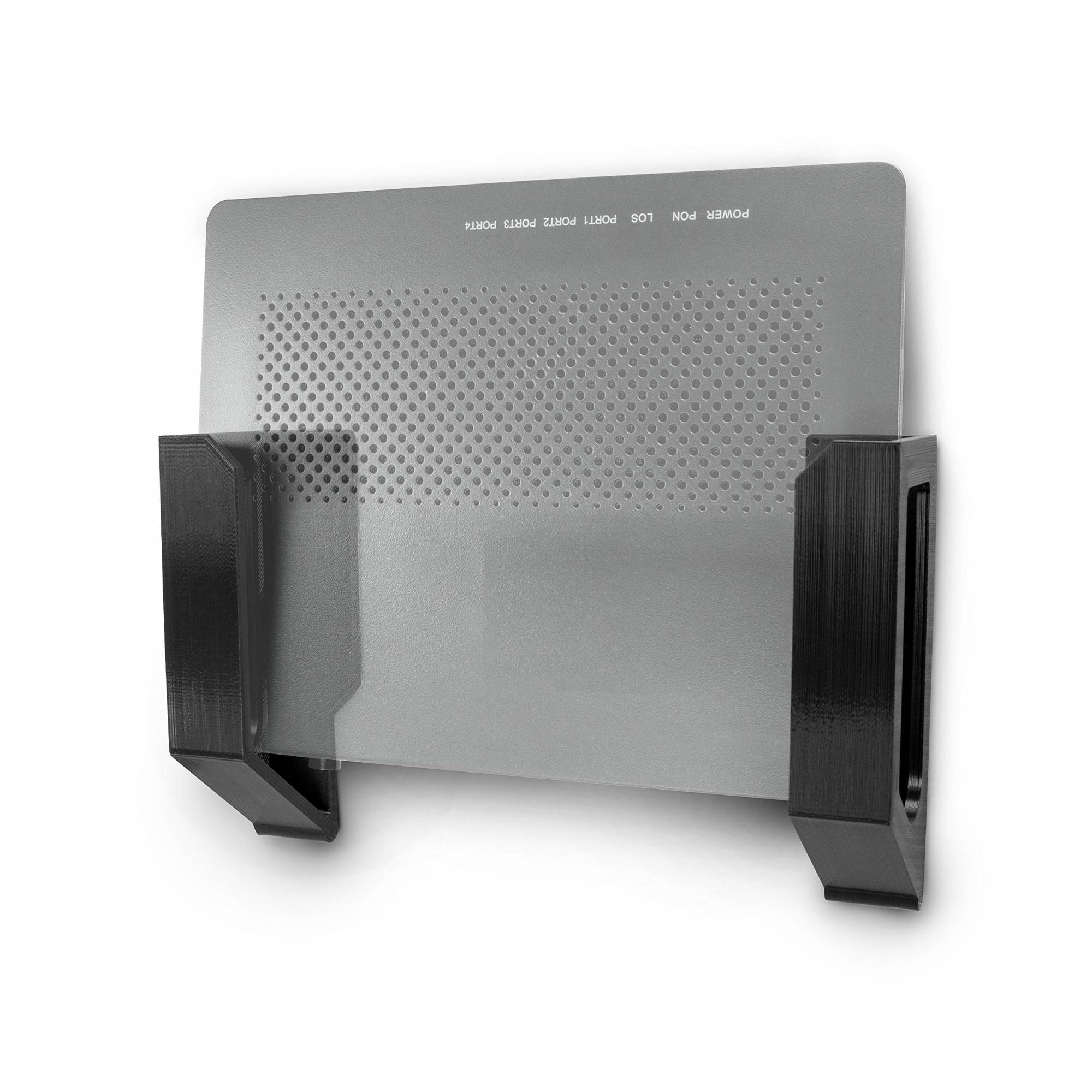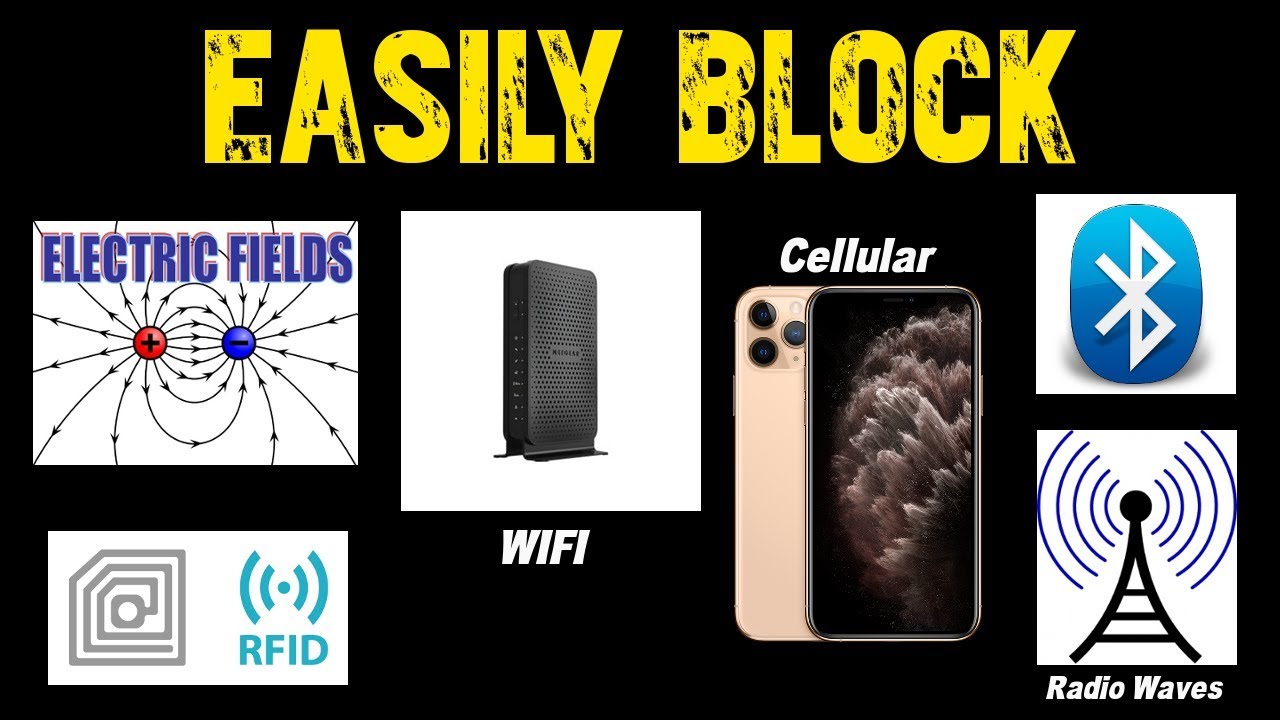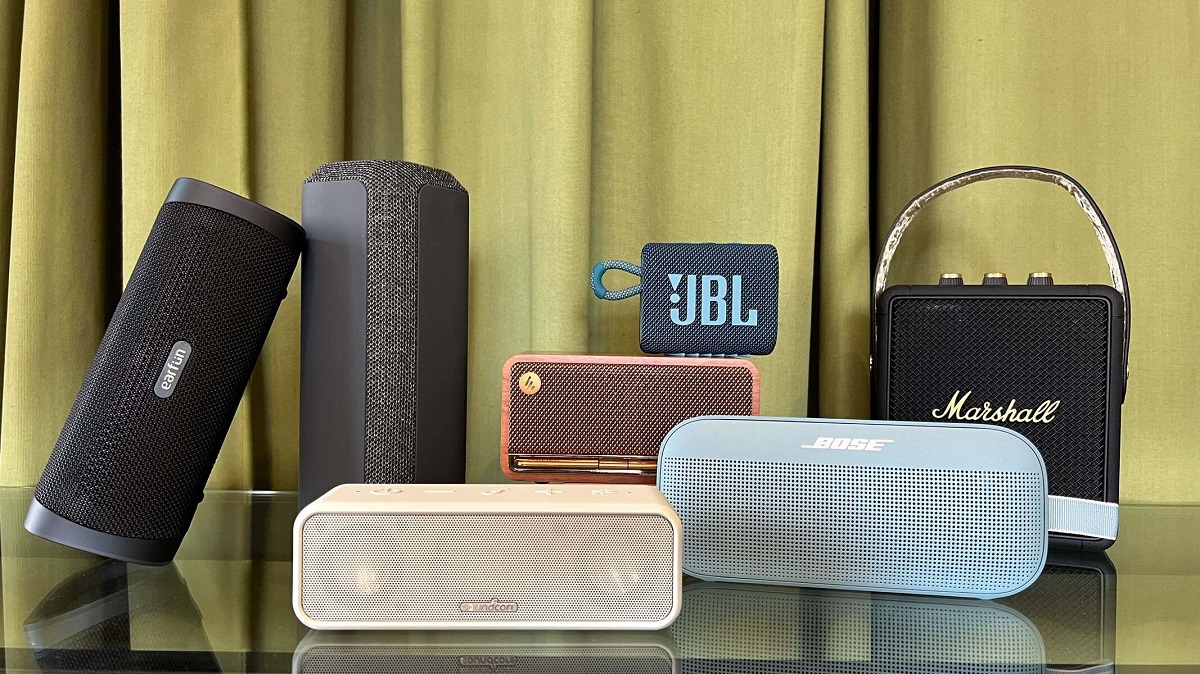Introduction
Welcome to our guide on how to reduce wifi radiation at home. With the increasing popularity of wireless networks, more and more households are relying on wifi for internet connectivity. While convenient, wifi routers emit radio frequency (RF) radiation, which has raised concerns about its potential health risks. In this article, we will explore what wifi radiation is, the potential health risks associated with it, and provide you with practical tips to minimize your exposure to wifi radiation.
Wifi radiation is a form of electromagnetic radiation that is emitted by wireless devices, such as routers and smartphones, to transmit data. The radio waves used by wifi routers fall into the category of non-ionizing radiation, which means they do not have enough energy to break chemical bonds or damage DNA like ionizing radiation, such as x-rays or gamma rays.
However, studies have shown that long-term exposure to wifi radiation may have adverse effects on human health. Some individuals may experience symptoms like headaches, fatigue, sleep disturbances, and difficulty concentrating. Additionally, there are concerns about the potential link between wifi radiation and more serious health issues, such as cancer and reproductive problems, although further research is needed to establish concrete evidence.
Reducing your exposure to wifi radiation is not about eliminating it entirely but rather minimizing it to levels that are considered safe. By taking a few simple steps, you can create a healthier and safer environment for you and your family. In the next sections, we will delve into the potential risks of wifi radiation and provide practical tips on how to reduce it.
Understanding Wifi Radiation
Before we discuss how to reduce wifi radiation, it’s important to understand what wifi radiation is and how it is produced. Wifi radiation, also known as radiofrequency radiation, is a type of electromagnetic radiation that is emitted by wireless network devices, including routers, modems, and devices connected to the network.
Wifi routers operate by transmitting and receiving data through radio waves. These radio waves are a form of non-ionizing radiation, which means they do not have enough energy to directly damage genetic material or cause cell mutations like ionizing radiation, such as x-rays or ultraviolet (UV) rays.
However, while wifi radiation falls within the non-ionizing radiation spectrum, it still has the potential to have biological effects on the human body. The main concern is that prolonged and continuous exposure to high levels of wifi radiation may lead to negative health outcomes.
Wifi radiation operates at a frequency of 2.4GHz or 5GHz, which is similar to the frequencies used by microwave ovens and cordless phones. These frequencies allow wifi signals to penetrate walls and other objects, enabling wireless connectivity throughout your home or office.
It’s important to note that the strength of wifi radiation diminishes with distance. The further you are from the wifi source, the weaker the radiation levels become. Additionally, the power output of a wifi router also plays a role in determining the intensity of the radiation emitted.
While there is ongoing debate and research regarding the potential health effects of wifi radiation, it is always a good idea to take precautionary measures to minimize exposure. In the next section, we will explore the potential health risks associated with wifi radiation and the importance of reducing our exposure.
The Potential Health Risks of Wifi Radiation
The increasing use of wifi technology has led to concerns about the potential health risks associated with prolonged exposure to wifi radiation. While there is still ongoing research on this topic, several studies have highlighted potential effects that wifi radiation may have on human health.
One of the main concerns is the impact of wifi radiation on our biological systems. Some studies suggest that long-term exposure to high levels of wifi radiation can lead to oxidative stress, which is an imbalance between free radicals and antioxidants in the body. This can potentially lead to cellular damage and disruption of various biological processes.
Furthermore, there are concerns about the potential link between wifi radiation and fertility. Some research has indicated that wifi radiation may affect sperm quality, leading to reduced fertility in males. Similarly, studies have suggested that wifi radiation may have an impact on female reproductive health by affecting hormone levels and menstrual cycles.
In addition to reproductive health, there are concerns about the potential effects of wifi radiation on brain function. Some studies have reported that prolonged exposure to wifi radiation may lead to cognitive impairments, including memory loss, difficulty concentrating, and changes in brain activity. However, further research is needed to fully understand the long-term effects of wifi radiation on brain health.
While the research on the health effects of wifi radiation is still evolving, it is prudent to take precautionary measures to minimize exposure, especially for vulnerable individuals such as pregnant women, children, and individuals with underlying health conditions. In the next section, we will discuss how to assess the levels of wifi radiation in your home and provide practical tips for reducing your exposure.
Assessing Your Wifi Radiation Levels
Before implementing any strategies to reduce wifi radiation, it is important to assess the levels of radiation in your home. While you can’t see or feel wifi radiation, there are several ways to measure and evaluate its intensity.
One common method is to use an electromagnetic field (EMF) meter or a wifi radiation detector. These devices can measure the levels of radiation emitted by your wifi router and other wireless devices. By using an EMF meter, you can identify areas in your home where wifi radiation levels are highest and take appropriate steps to minimize exposure.
Another way to assess wifi radiation levels is by checking the power output of your wifi router. Most routers have adjustable power settings, and reducing the power output can help decrease radiation levels. Consult the user manual or manufacturer’s instructions to determine how to access and modify the power settings on your router.
Additionally, it is important to be aware of the location and proximity of wifi devices in your home. If your router is situated in a central location, the radiation levels may be higher in areas that are closer to the device. Consider conducting a survey or using a wifi signal strength app to map out areas with stronger wifi signals.
Furthermore, it is crucial to keep in mind that other household devices, such as baby monitors, cordless phones, and microwaves, can also contribute to overall EMF exposure. Assess the levels of radiation emitted by these devices as well and take necessary measures to reduce exposure in those areas.
By assessing and understanding the levels of wifi radiation in your home, you can make informed decisions and take appropriate steps to minimize exposure. In the next section, we will provide you with practical tips for reducing wifi radiation at home.
Tips for Reducing Wifi Radiation
Reducing your exposure to wifi radiation is crucial for maintaining a healthy environment, especially in today’s world where wireless technology is prevalent. Here are some practical tips to help you minimize wifi radiation in your home:
1. Keep Your Router Away from Living Spaces: Place your wifi router in an area that is not frequently used, such as a utility room or basement. This will help minimize direct exposure to wifi radiation in commonly occupied areas.
2. Use Ethernet Cables Instead of Wifi: Where possible, connect your devices, such as desktop computers or gaming consoles, directly to your router using Ethernet cables. This eliminates the need for wifi connectivity and reduces your exposure to wireless radiation.
3. Limit Wifi Usage and Turn it Off When Not in Use: Consider reducing the amount of time you spend connected to wifi. When you are not actively using the internet, turn off the wifi on your devices or your router. This will help reduce overall exposure to wifi radiation.
4. Use a Wifi Router with Lower Power Output: Look for wifi routers that allow you to adjust the power output. Lowering the power output can decrease radiation levels without compromising your internet connectivity.
5. Consider Wifi Radiation Shields or EMF Protective Devices: There are products available, such as wifi radiation shields or EMF protective cases, that claim to reduce wifi radiation exposure. Research these products, read reviews, and consult with experts to determine their effectiveness and suitability for your needs.
6. Optimize Router Placement and Antenna Positioning: Place your router in an elevated position, such as on a high shelf, to reduce the area of direct exposure. Additionally, position the antennas vertically to direct the wifi signal towards the desired areas rather than spreading it in all directions.
7. Reduce Overall EMF Exposure in Your Home: Apart from wifi radiation, there are other sources of electromagnetic fields (EMF) in your home, such as electrical appliances and power lines. Minimize your overall EMF exposure by keeping electrical devices at a distance, using battery-powered devices whenever possible, and avoiding prolonged exposure to high-voltage power lines.
By implementing these tips, you can take proactive steps to reduce your exposure to wifi radiation and create a healthier living environment for you and your family.
Keep Your Router Away from Living Spaces
One effective way to reduce your exposure to wifi radiation is to keep your router away from living spaces. Placing your router in an area that is not frequently occupied, such as a utility room, basement, or garage, can help minimize direct exposure to wifi radiation in commonly used areas of your home.
The distance between you and the wifi router plays a significant role in determining the intensity of wifi radiation. According to the Inverse Square Law, the intensity of radiation decreases significantly as you move further away from the source. By keeping your router in a location that is not in close proximity to your living spaces, you can reduce your exposure to wifi radiation.
If possible, try to position your router in a centralized area of your home. This can help evenly distribute the wifi signal throughout your living spaces, ensuring reliable connectivity while minimizing exposure to concentrated radiation in specific areas.
It’s important to note that walls and objects can partially block wifi signals, reducing the amount of radiation that reaches your living spaces. However, it’s still advisable to keep the router as far away from commonly occupied areas as possible to minimize exposure.
If you live in an apartment building or have close neighbors, it is also beneficial to consider the positioning of their routers. Try to position your router away from walls that are shared with other units to reduce exposure to radiation from neighboring routers.
Placement of your router plays a vital role in minimizing your exposure to wifi radiation. By keeping your router away from living spaces, you can significantly reduce the amount of direct radiation you and your family are exposed to on a daily basis.
Use Ethernet Cables Instead of Wifi
An effective way to reduce your exposure to wifi radiation is to use Ethernet cables instead of relying solely on wifi for internet connectivity. Ethernet cables provide a direct, wired connection between your devices and the router, eliminating the need for wireless communication.
When you connect your devices, such as desktop computers, gaming consoles, or smart TVs, to the router via Ethernet cables, you eliminate the wifi signal and the associated radiation in those areas. This method not only reduces your exposure to wifi radiation but also ensures a stable and reliable internet connection, especially for bandwidth-intensive activities like online gaming or streaming.
Using Ethernet cables also helps to minimize the distance between your device and the router. This, in turn, reduces the strength of the wifi signal and the radiation emitted. The shorter the distance, the lower the intensity of the radiation.
In situations where using Ethernet cables is not practical or convenient, consider using a combination of both wired and wireless connections. For example, you can connect devices that require a stable and fast connection, like a desktop computer, using an Ethernet cable, while still using wifi for devices that require mobility, such as smartphones or tablets.
When using Ethernet cables, it’s important to ensure that they are properly connected and in good condition. Use high-quality, shielded cables to minimize interference and optimize the connection speed. Additionally, avoid bending or pinching the cables, as this can cause signal degradation and affect the overall performance.
While using Ethernet cables may not completely eliminate your exposure to wifi radiation, it significantly reduces your reliance on wireless communication and lowers your overall exposure. By incorporating Ethernet cables into your setup, you can create a safer and healthier living environment.
Limit Wifi Usage and Turn it Off When Not in Use
Another effective way to reduce your exposure to wifi radiation is to limit your wifi usage and turn it off when not in use. While it’s convenient to have constant internet access, keeping your wifi connection on all the time means continuous exposure to wifi radiation.
One simple step you can take is to consciously limit the amount of time you spend connected to wifi. Evaluate your daily internet usage and identify times when you can disconnect from wifi, such as during meals, family time, or before bed. By consciously disconnecting from wifi, you can reduce your overall exposure to wifi radiation.
Additionally, if you won’t be using the internet for an extended period, consider turning off your wifi router. This can be done manually by accessing the router settings or by using a timer switch to schedule the wifi router’s operation. By turning off the wifi when not in use, you eliminate unnecessary radiation and create a healthier environment.
In situations where you have multiple devices connected to the wifi network, encourage device consolidation. For example, instead of having each family member use their own device, consider sharing a device when possible. This reduces the number of devices connected to the wifi network and subsequently decreases the overall wifi radiation in your home.
Another option is to use airplane mode on your mobile devices when you don’t need internet access. Airplane mode disables all wireless communications, including wifi, Bluetooth, and cellular data. By enabling airplane mode, you completely disconnect from wifi radiation and reduce your exposure.
For areas in your home where wifi coverage is not necessary, such as basements or guest rooms, consider creating no-wifi zones. This means turning off the wifi signal in those areas or using devices that do not have wifi capabilities. Creating no-wifi zones helps further minimize your wifi radiation exposure.
By limiting your wifi usage and turning it off when not in use, you significantly decrease your exposure to wifi radiation. Taking these simple steps can contribute to a healthier living environment for you and your family.
Use a Wifi Router with Lower Power Output
Using a wifi router with lower power output is an effective strategy to reduce your exposure to wifi radiation. Most routers have adjustable power settings that allow you to modify the strength of the wifi signal and subsequently reduce the intensity of the radiation emitted.
When setting up or replacing your wifi router, check if it offers options to adjust the power output. Lowering the power output can help minimize the range of the wifi signal, limiting the areas where the radiation is strongest. Consult the user manual or manufacturer’s instructions to determine how to access and modify the power settings on your specific router model.
By reducing the power output, you not only reduce the intensity of wifi radiation but also potentially increase the overall lifespan of your router. Lower power output means less strain on the router’s components, resulting in reduced heat and potentially extending its longevity.
It’s important to note that reducing the power output should be done while considering the coverage area needed. Assess the range of your wifi signal and ensure that it adequately covers the areas where wifi connectivity is required. Adjust the power settings accordingly to achieve the desired coverage without unnecessarily increasing radiation levels.
If your router does not offer adjustable power settings or if you are unable to achieve the desired reduction in radiation levels, consider replacing your router with a model that has lower power output. Look for routers that are specifically designed to emit lower levels of radiation while still providing reliable coverage for your home.
When purchasing a new router, consider routers that are certified as “Low EMF” or “Low Radiation” by reputable organizations. These routers are designed to emit lower levels of radiation without compromising performance. Do thorough research and read reviews to find a router that suits your needs and provides the desired reduction in wifi radiation exposure.
Using a wifi router with lower power output is a proactive step in minimizing your exposure to wifi radiation. By carefully managing the power output of your router, you can create a safer and healthier environment in your home.
Consider Wifi Radiation Shields or EMF Protective Devices
If you are concerned about wifi radiation and want to take additional measures to minimize exposure, you may consider using wifi radiation shields or EMF protective devices. These products are designed to reduce the amount of radiation emitted by wifi routers and other wireless devices.
Wifi radiation shields, also known as wifi radiation reflectors or deflectors, are devices that are placed around or behind your wifi router. They are made of materials that claim to reflect or absorb some of the wifi radiation, redirecting it away from your living spaces. These shields are typically metallic or made of conductive materials that allegedly block or reduce the radiation levels.
When considering wifi radiation shields, it’s important to do thorough research and choose products from reputable manufacturers. Look for products that have been independently tested or certified to ensure their effectiveness. Reading reviews and customer experiences can also provide valuable insights into the performance of these devices.
Another option to consider is EMF protective devices, such as EMF shielding cases or EMF blocking fabrics. These products are specifically designed to shield your body from electromagnetic fields (EMF), including wifi radiation. These protective devices can be used with your mobile devices or worn as protective clothing or accessories.
Similar to wifi radiation shields, EMF protective devices should be carefully researched and sourced from reliable manufacturers. Look for products that have been tested and certified for their effectiveness in blocking or reducing EMF radiation. Keep in mind that not all products claiming to offer EMF protection may be scientifically proven to be effective, so it’s crucial to choose devices from reputable sources.
While the effectiveness of wifi radiation shields and EMF protective devices is a topic of debate within the scientific community, some individuals report feeling a reduction in symptoms or perceived benefits from using these products. It is important to note that personal experiences may vary, and further scientific research is needed to establish the true efficacy of these devices.
Before making the decision to invest in wifi radiation shields or EMF protective devices, it is recommended to consult with experts or professionals in the field to gain a better understanding of the available options and their potential effectiveness. They can provide guidance based on your specific concerns and help you make an informed decision.
Ultimately, if you decide to use wifi radiation shields or EMF protective devices, ensure that you still follow other recommended strategies, such as maintaining distance from your router, limiting wifi usage, and using Ethernet cables when possible, to create a comprehensive approach to minimizing wifi radiation exposure.
Optimize Router Placement and Antenna Positioning
The placement and positioning of your wifi router can significantly impact the distribution of wifi radiation in your home. By optimizing the router placement and antenna positioning, you can effectively reduce your overall exposure to wifi radiation.
Firstly, it’s important to place your router in a central location within your home. This helps to evenly distribute the wifi signal throughout your living spaces, reducing the need for the signal to travel long distances and minimizing the intensity of radiation in specific areas. Avoid placing the router near walls or objects that can obstruct the signal, as this may lead to increased power output and higher radiation levels.
When positioning your router, consider elevating it to a higher level, such as placing it on a shelf or wall-mounting it. Raising the router helps to reduce radiation exposure at ground level, especially in areas where people spend a significant amount of time, like living rooms or bedrooms.
Additionally, pay attention to the positioning of the router’s antennas. Most routers have adjustable antennas that can be rotated or repositioned. Position the antennas vertically, as this directs the wifi signal horizontally, covering a larger area and reducing the strength of the radiation emitted vertically. Keep the antennas away from commonly occupied areas, such as living rooms or bedrooms, to minimize direct exposure.
Experimenting with different antenna positions and orientations can help optimize the wifi signal while reducing radiation exposure. Try positioning the antennas at different angles or in different directions to find the configuration that provides the best coverage with the least radiation intensity.
If you have a multi-story home, consider placing the router on the upper floors to maximize coverage while minimizing exposure to radiation on lower floors. This helps to reduce direct exposure to the radiation emitted by the router, especially in areas where people spend the most time.
Lastly, avoid placing the router in areas where you spend a lot of time, such as your desk or bedside table. Keeping the router away from commonly occupied areas helps to minimize your exposure to wifi radiation, especially during extended periods of time.
Remember, optimizing the router placement and antenna positioning is an important step in reducing wifi radiation exposure. By strategically positioning your router and adjusting the antenna orientation, you can create a safer living environment with minimal radiation exposure.
Reduce Overall EMF Exposure in Your Home
In addition to minimizing wifi radiation, it is beneficial to reduce your overall exposure to electromagnetic fields (EMF) in your home. EMF is emitted by various electrical devices and power sources, and by reducing your exposure to EMF, you can create a healthier living environment.
Here are some strategies to help you reduce overall EMF exposure in your home:
Avoid Proximity to Electrical Devices: Keep a distance from electrical devices such as computers, televisions, hair dryers, and electric blankets. The strength of EMF decreases with distance, so maintaining a safe distance can significantly reduce your exposure.
Turn Off and Unplug Electrical Devices: When not in use, turn off and unplug electrical devices. Even when not operating, some devices can still emit low levels of EMF. By turning them off and unplugging them, you can eliminate any residual EMF emissions.
Keep Electrical Devices Away from Sleeping Areas: Bedrooms are spaces where we spend a substantial amount of time resting and rejuvenating. Keep electrical devices, such as alarm clocks, phones, and lamps, away from your bedside or at a distance from your sleeping area to minimize exposure to EMF while you sleep.
Use Battery-Powered Devices: Whenever possible, opt for battery-powered devices instead of those that need to be plugged into electrical outlets. Battery-powered devices generate minimal EMF compared to devices that are constantly connected to a power source.
Consider EMF Shielding Materials: Use EMF shielding materials, such as special paints or fabrics infused with metal fibers, to create a barrier against electromagnetic radiation. These materials can be applied to walls, curtains, or clothing to reduce the penetration of EMF into your living spaces or to shield your body from exposure.
Minimize Proximity to Power Lines: Power lines can emit high levels of EMF. If you live in close proximity to power lines, consider rearranging furniture and living spaces to maximize the distance between you and the power lines.
Use a Grounded Power Strip: Instead of having multiple electrical devices plugged into different outlets, use a grounded power strip. This helps to consolidate the number of outlets needed and reduces the number of EMF sources in one area.
By implementing these strategies, you can minimize your exposure to EMF and create a healthier living environment for you and your family. Remember, every step towards reducing overall EMF exposure contributes to a safer and more comfortable home.
Conclusion
Minimizing your exposure to wifi radiation is an important step in creating a healthier living environment. While there is still ongoing research on the potential health effects of wifi radiation, taking proactive measures can help reduce unnecessary radiation and provide peace of mind.
In this guide, we discussed the basics of wifi radiation, the potential health risks associated with it, and practical tips for reducing exposure. By keeping your router away from living spaces, using Ethernet cables instead of wifi, limiting wifi usage, and considering a router with lower power output, you can significantly decrease your exposure to wifi radiation.
We also explored the option of using wifi radiation shields or EMF protective devices. While the effectiveness of these products is still debated, some individuals report benefits from their use. It’s important to research and choose reputable products if you decide to incorporate them into your approach to reducing wifi radiation exposure.
Furthermore, optimizing router placement and antenna positioning can help distribute the wifi signal more efficiently and reduce overall radiation levels in your home. Additionally, reducing your exposure to overall electromagnetic fields (EMF) by keeping a safe distance from electrical devices, turning off and unplugging devices when not in use, and using battery-powered devices can contribute to a healthier living environment.
Remember, no single strategy can completely eliminate wifi radiation, as it has become an integral part of our modern lifestyle. However, by implementing these tips and adopting a comprehensive approach, you can significantly reduce your exposure to wifi radiation and create a safer and healthier home for you and your family.
Always stay informed about the latest research and consult with professionals if you have any specific concerns. By staying proactive and taking steps to minimize your exposure, you can strike a balance between enjoying the benefits of wireless technology and prioritizing your well-being.







